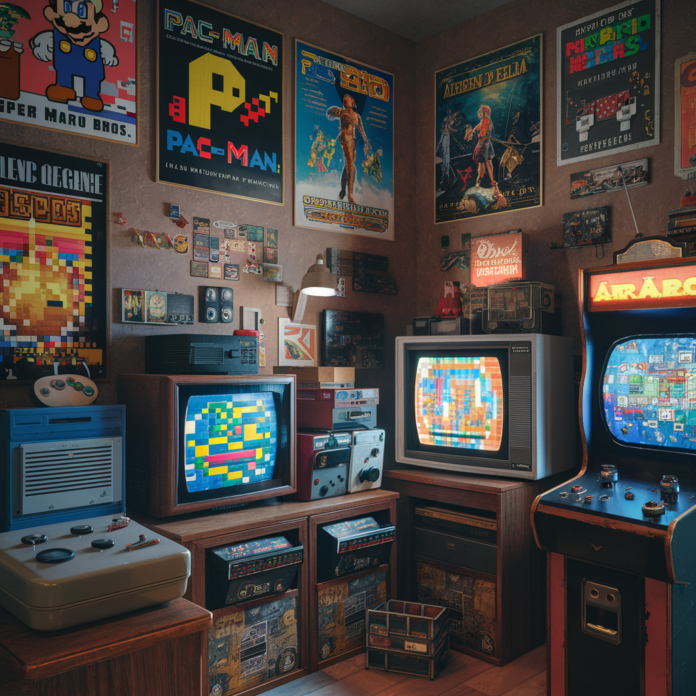Welcome to TheGameArchives, the premier digital sanctuary dedicated to the preservation and celebration of video game history. Our platform serves as a comprehensive resource for gamers, researchers, and collectors alike, offering an ever-growing collection of titles, development materials, and historical documentation spanning from the earliest arcade cabinets to modern indie masterpieces. More than just a repository, we strive to contextualize each artifact—uncovering developer interviews, tracing design evolutions, and safeguarding rare builds that might otherwise disappear into obscurity. Whether you’re looking to revisit a childhood favorite, study the technical marvels of retro hardware, or contribute to safeguarding gaming’s legacy, this is where the past remains playable.
1. The Archive Expands: Notable New Additions
This month, TheGameArchives has enriched its collection with several extraordinary finds that highlight the diverse tapestry of gaming history. Among the highlights is a recently unearthed prototype of a never-released Sega Dreamcast RPG, complete with debug menus that reveal cut content and experimental mechanics. We’ve also digitized a complete run of 1990s gaming magazines, preserving their previews of canceled projects and contemporary reviews that capture how games were perceived in their era. For fans of physical media, our team has documented every regional variant of the Super Nintendo’s cartridge design, accompanied by 4K scans of their intricate PCB layouts. Each addition undergoes meticulous verification to ensure authenticity before being cataloged with technical metadata, historical commentary, and—where legally possible—multiple preservation formats to guarantee future accessibility.
2. Inside the Vault: Our Digitization Process Revealed
Preserving games is far more complex than simply copying files—it requires specialized hardware, forensic techniques, and scholarly rigor. In this section, we pull back the curtain on how TheGameArchives rescues aging media from degradation. For cartridges, we use custom-built readers to extract ROMs while bypassing dying save batteries; for optical discs, our cleanroom-equipped drives employ error-correction algorithms to recover data from rotting CDs. Particularly fragile artifacts like Betamax developer tapes or floppy disks demand even more care, often involving magnetic imaging to reconstruct decaying sectors. Beyond the binaries, we document everything from manual typography to packaging foil textures, creating a holistic record of each game as a physical object. These methods, developed in partnership with digital archivists at institutions like the Strong Museum of Play, set new standards for ensuring these works survive beyond their original hardware’s lifespan.
3. Forgotten Pioneers: Rescuing Lost Developer Histories
While iconic studios like Nintendo and Blizzard are well-documented, TheGameArchives seeks to illuminate the unsung heroes whose innovations shaped gaming. Our latest research initiative focuses on 1980s Japanese computer game collectives like Kure Software Koubou, whose boundary-pushing PC-98 titles influenced entire genres yet remain untranslated. Through recovered design documents and newly conducted interviews, we’re reconstructing their creative processes—from hand-drawn pixel art techniques to early attempts at procedural generation. Similarly, we’ve partnered with former employees of defunct European studios to archive their Amiga and ZX Spectrum work, including unreleased concepts that predate now-standard mechanics. These narratives, often overlooked in mainstream retrospectives, are vital to understanding gaming as a global, collaborative art form rather than a series of isolated hits.
4. Playable Preservation: Emulation Done Right
Accessibility is core to our mission, which is why TheGameArchives carefully curates legal emulation solutions for historical study. Our platform provides configuration guides for cycle-accurate emulators like bsnes and MAME, optimized to replicate original hardware behavior down to sprite flickering and CRT scanlines. For web-based exploration, we’ve developed a streaming system that lets users experience select titles via browser-based FPGA emulation, with optional overlays explaining technical quirks like the NES’s infamous sprite limitations. Crucially, we differentiate between abandoned games (offered as preservation copies with community patches) and commercially available titles (documented through video essays and disassemblies instead). This ethical framework, reviewed by intellectual property scholars, balances cultural preservation with respect for active creators’ rights.
5. Join the Movement: How to Contribute
TheGameArchives thrives through collective effort, and there are countless ways to participate regardless of expertise. Hardware collectors can loan rare consoles for our teardown and 3D-scanning projects, while multilingual volunteers help translate interviews or localize lost text adventures. Coders may assist in developing new tools, such as our upcoming AI-assisted metadata generator that identifies recurring sprites across unrelated games. Even sharing childhood memories of obscure titles in our forums helps piece together gaming’s oral history. For educators, we offer curated lesson plans using our archives to teach topics from programming history to media archaeology. Every contribution is credited and preserved alongside the artifacts themselves, ensuring future generations understand not just what games existed, but why they mattered to real people.



